The Algarve is the most southern part of Portugal. Portugal is part of the Iberian Peninsula formed together with Spain.
Facts and figures about Portugal?
Why Algarve Portugal?
- rich in historical places and architecture
- fine food
- good wine
- beautiful beaches
- famous golf courses
- inexpensive
- friendly people
- fantastic nature
This video shows you a variety of things to do and see in the Algarve, Portugal.
East, Central and West Algarve
In the Eastern Algarve you will find beautiful places like Tavira, Olhão and Faro (where the airport is). In Central Algarve you will find the lively coastal resorts of Vilamoura, Albufeira and Carvoeiro.
In Western Algarve Portugal the historical towns of Lagos and Alvor are definitely worth a visit.
All our rental villas located in beautiful region Algarve Portugal. We have villas for rent near the coast. Further inland of the Algarve Portugal we rent some nice luxury villas near the historical Silves with its Moorish castle. And last but not least, we have some fantastic villas for rent in the Monchique mountain area, in the hinterland of Portimão.
Albufeira
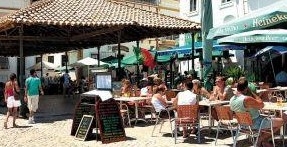
Albufeira, once a small fishing village it has now developed to be a very touristic area. Many holiday makers return year after year because of the lovely beaches, very good climate, proximity of many restaurants, bars and pubs.
Alte
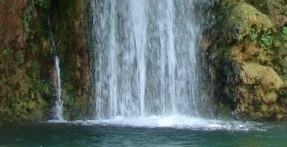
Alte is the oldest village in Algarve Portugal. Alte is located in the hills of Serra do Calderao and very picturesque. The village has some nice features like a waterfall, cosy bars and fine restaurants. Enjoy the real Algarve. Enjoy Alte.
Alvor

Alvor is a lovely picturesque village in Algarve Portugal. With lots of bars, restaurants, live music, a beautiful lagoon and a long-stretched white sandy beach, Alvor is a wonderful place to visit in Portugal.
Faro
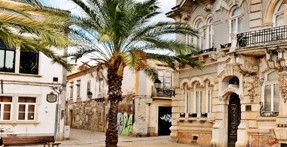
Faro is the capital of Algarve Portugal and is mostly known because of the airport. But the town is absolutely worth a visit. Faro offers a historical centre, a fisherman’s harbor, a nice shopping area and a fantastic beach at Faro Island.
Ferragudo
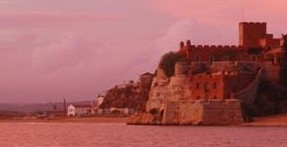
Ferragudo with its Roman castle is the most picturesque fisherman’s village of Algarve Portugal. Here you can still see the fisherman at work. It has a nice beach with lively beach bars where you can eat, drink, dance and enjoy your holiday in the Algarve.
Lagos

Lagos is situated in the western part of Algarve Portugal. The old town of Lagos has a nice pedestrian area with shops, bars and restaurants. Furthermore the marina, lively nightlive and beautiful beaches are famous.
Messines

Messines is a tyical market town in the central part of Algarve Portugal. Here you can find the real Algarve. In Messines the locals enjoy their ‘bica’ (espresso) while playing domino or talking about the latest orange prices.
Monchique

Monchique is a mountain village in Serra de Monchique in Algarve Portugal. From here you can reach the highest top of the Algarve. ‘Foia’ offers fantastic 360 degrees views over Algarve Portugal.
Olhao
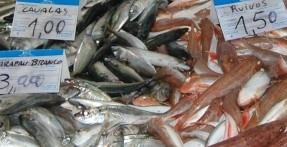
Olhão is located just east of Faro in Algarve Portugal. Here you can find the real fisherman’s life, with the best and largest daily fish market in the Algarve. A ferry takes you to the islands of the Ria Formosa.
Portimao
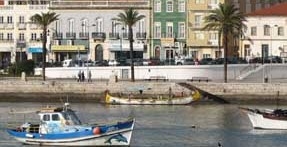
Portimão is a lively city in Algarve Portugal. With lots of bars and restaurants, the largest shopping centre of the Algarve, an international racing circuit and the yearly Sardine Festival, Portimão should be on your sightseeing list!
Sagres
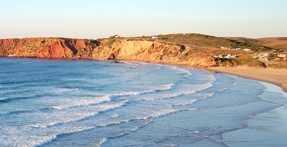
Sagres is a village in Western Algarve. It lies close to the farthest western point of the Algarve, Cabo de São Vincente in Portugal. Sagres is very popular with surfers. The waves, beaches and fish are excellent!
Silves

Silves is a historic town in the Algarve. It has a Roman bridge, a castle and an old centre with narrow, winding and cobbled streets. The medieval festival in August is worth visiting! Silves is a very pleasant place to visit in Portugal.
Tavira

Tavira is a historical town in Eastern Algarve. The town is cut in two by a river with lots of little bars and restaurants on both sides. A ferry takes you to the beautiful Tavira Island with its white, long-stretched beach, bars and restaurants.
Vilamoura
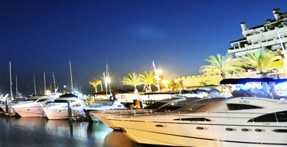
Vilamoura is famous in Algarve Portugal because of the Marina (harbour) and numerous golf courses. All year round golfers and tourists enjoy themselves in the harbour at the nice terraces, bars, Irish pubs and restaurants.
Each region of Algarve Portugal has its own character and charism.
East Algarve
Eastern Algarve is relatively quiet and peaceful. This part of the Algarve offers a lot of beautiful nature and several natural parks. The beaches are beautiful and quiet.
Central Algarve
In Central Algarve you will find a lot of lively coastal resorts that offer restaurants, bars, pubs, shops, boulevards and souvenir stalls. There are lots of possibilities for watersports and other leisure activities. Central Algarve Portugal has some of the finest beaches of the Algarve and a spectacular coast with golden rock formations.
West Algarve
Western Algarve also offers some very fine beaches. The western part of Algarve Portugal is famous for its surfing conditions. Along the coast, you will find a lot of laid-back villages, beautiful unspoiled nature and some attractive historical towns.
Facts and figures about Portugal?
Portugal is the hidden gem of Europe and the Algarve is the hidden gem of Portugal. We know by now, the Algarve has breath-taking coastline, best beaches of Europe, best golf courses of Europe…. but what do you actually know of this country?
You have made the decision to spend your holidays to Portugal, or maybe even a longer period, or you live in Portugal?
Algarve Housing has put some social and geographical facts of Portugal, for you:
Geography of Portugal
Portugal is situated in the south of Europe, at the western end of the Iberian Peninsula, bordering Spain on its northern and eastern frontiers, and with the Atlantic Ocean surrounding its southern and western frontiers. Its total size is 92 391 km2, including the islands of Madeira and the Açores, and 620 km2 of water.
Rivers in Portugal
Several rivers cross the country, mostly originating in Spain and dropping into the Atlantic Ocean. The main, primary ones, from north to south, are the Minho, the Douro, The Mandego, the Tagus and the Guadiana.
North of the Tagus River, the landscape is characterized by mountains intersected by deep valleys. The highest peak of 1993 m lies in the Serra da Estrela.
South of the Tagus, it is wide plain and rolling hills that make up the landscape, planted mostly with Mediterranean trees like cork oaks, olive trees, figs, vineyards.
Climate in Portugal
Most of Portugal boasts a pleasant warm Mediterranean climate. Annual temperatures lie between 12°C and 13°C in the north of Portugal, and between 17°C and 18 °C in the south. The Algarve in the south of Portugal, is drier and warmer than the north, reason why this region is so popular with tourists.
The Portuguese population
The number of inhabitants of Portugal lie around 10,29 million (in 2018). Most live concentrated along the coast, especially around the capital, Lisbon, and the second major city, Porto. The regions of Alentejo, the interior area of the Algarve, Trás-os-Montes and Beiras have very low density.
Traditionally, Portugal is a country of emigration, with more than 5 million Portuguese people living abroad. In the last few decades, Portugal has received many immigrants from Brazil, Portuguese-speaking African countries and Eastern European countries. In the last few years, many northern Europeans have chosen Portugal as their base country.
Politics in Portugal
Portugal has been a Republic since the overthrow of the monarchy in 1910. It is only on April 25th
1974, with the Carnation revolution that ended a 22 year-long dictatorship, that a Democratic Republic was installed. A President is elected every 5 years as the chief of State and representing the Nation. He then appoints a Prime Minister, who is the head of the Government and appoints the Council of Ministers.
Administrative division
Portugal is divided into seven regions: Porto and North; Center; Lisbon and Tagus Valley; Alentejo; Algarve; the Madeira islands; and the Azores islands. These, in turn, are divided into 18 districts for the sake of administration.
Religion in Portugal
The predominant religion in Portugal is Christianity. 81% of the nation is Catholic, although most do not practice very actively. However, it is a very common tradition to have your children baptized, to marry in church and to receive the Last Rites.
Economy in Portugal
Portugal joined the European Community in 1986 and since then, has increasingly diversified its economy, turning it into a more service-based economy. Especially tourism has increased lately.
Over the past decades, the government has privatized many state-controlled firms. The country’s economy was badly affected by the financial crisis in 2007-2008, but has since 2014 recovered significantly. However, struggles are still tangible, and the minimum wage was only 557 euros in 2017.
Algarve Housing hopes that with this bit of background information on Portugal, you become more aware of the country you have chosen as your destination and make your Portugal holiday even more interesting.
Algarve Housing rent villas in the Algarve. Please have a look around for your private paradise in the Algarve, or contact me for any more information.

History of Portugal in a nutshell
While you are on holiday in the Algarve, you will see many historical remnants of different eras. Algarve Housing has put the main historical eras that had a great influence on what Portuguese culture is today, in a row. Let’s talk about the history of Portugal:
Roman Era
During Romanization, from 140 BC till about 452 AD, Portugal was known as Lusitania. The Romans brought Latin, the foundation of the Portuguese language, and developed mining and agriculture (particularly wine).
The Middle Ages in Portugal
When the Roman Empire fell, the Visigoths took over the Iberian Peninsula and laid the strong foundation of the Church. However, the Moors invaded the Peninsula in 711 and occupied Portugal until 1249. In 1279, Portugal became an independent kingdom from Spain and Afonso Henriques its first king. Until today, the borders remain the same.
Imperial Era
Portugal was turned into a powerful nation. It was the age of discovery, with famous explorers like Vasco da Gama, who discovered the route to India, Fernando Magallan, who sailed around the world, and Bartolomeu Dias, who sailed around Africa. Countries were colonized, such as Brazil, Angola, Mozambique (and more). Portugal was one of the leading world powers, with Spain as its biggest rival.
Decline and restoration
When in 1578, King Sebastian was killed in Africa and left no heir, Portugal entered a period of chaos with many wars in Europe and trouble in the Colonies that led to a steady decline of its empire. In 1580, King Philip II of Spain invaded Portugal.
After the Restauration War, from 1640 to 1668, it managed to defeat Spain, which recognised Portugal’s independence.
Napoleon and the First Republic
The 19th century saw an invasion by Napoleon, which was eventually seen off with the help of the British Empire, with whom they had always kept a good relationship, Portuguese Independence was restored in 1812. There followed turbulent times.
On the 5th of October 1910, after a Republican revolution, the King resigned and the First Portuguese Republic was established. Until today, this Dia da Republica remains a national holiday in Portugal.
Dictatorship and the Carnation Revolution
In 1926, a Military Coup brought an end to the First Republic, the beginning of a long dictatorship led by Salazar with nationalism and isolation as his guiding motors. He established the Second Portuguese Republic in 1933. Nearly half a century of oppression and censorship followed, pushing Portugal into national poverty and social divide. Alongside the suppression of the increasing pressure for independence from the Portuguese Colonies that cost many Portuguese lifes and a lot of money, this led to a peaceful Carnation Revolution on the 25th of April 1974 by the military, without one single gunshot. An end was made to a dictatorship that left a deep impact on the population. This day is a national holiday still celebrated every year in Portugal
Democracy and EU membership
Democracy was installed, it marked the beginning of the Third Republic with its first elections in 1975. All remaining Portuguese colonies were granted independence. However, the first ten years of the 3rd Republic were years of economic trouble. In 1986, Portugal joined the European Union. The growth of many of Portugal’s main exporting companies and the European Union’s structural funds were leading forces in a new period of robust economic growth and socio-economic development which would last to the early 2000s, when Portugal joined the Euro.
